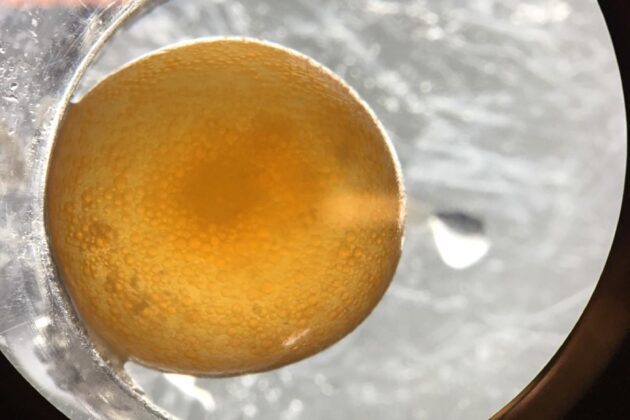How we work with gene editing at Nofima

Gene editing is a technique that Nofima has adopted in several of its aquaculture research projects. Here is some information about why and how Nofima uses this technique, along with references to some useful information for readers who would like to know more.
What is gene editing?
Gene editing is a collective term for genetic technologies that make targeted changes in the genetic material (DNA) of an organism. It could, for example, relate to removing or adding one or more bases to the DNA, or replacing one gene variant with another.
The most common technique is CRISPR/Cas9. You can read about how this technique works on Bioteknologiradet.no (the Norwegian Biotechnology Advisory Board).
What do we do at Nofima?
Nofima has approved facilities for working on gene editing in Ås, Tromsø and Sunndalsøra.
In our research we use this technique in studies involving fertilised salmon eggs, established cell lines, primary cells and bacteria. Gene editing is a valuable tool for examining the functions of individual genes.
The potential for gene editing lies in the fact that changes can be made quickly and directed. It is possible to see the effects of gene editing as soon as the effects on the trait can be measured.
We have included gene editing in our research on genes that control the fat metabolism in salmon, and in research on resistance to viruses and parasites. Disease resistance is important for reducing disease in farmed fish. All our gene editing projects relating to fish have a Responsible Research and Innovation (RRI) component. RRI means that societal stakeholders collaborate throughout the research process to adapt the process to values, needs and expectations from society.
About regulation and permits
Today gene editing is used on animals in Norway for research purposes only, i.e. when one wishes to discover the effects produced by different genes. Laws and regulations prohibit the use of gene-edited animals in food production in Norway and the EU. Gene editing is equated here with genetic modification, see the Bioteknologiradet.no for more information about legislation.
The reason for strict regulation is the uncertainty surrounding the possible risks to animals, consumers and the environment. Ethical considerations are important. There must be no risk of destroying nature for future generations or changing the balance of ecosystems.
The intrinsic value and welfare of animals is an important consideration. Alternative technologies also need to be considered in the same risk assessment. In some cases, e.g., when gene editing can substantially reduce or eliminate suffering, it may be unethical not to use gene editing. It is sometimes argued that it is not the techniques themselves, but the effects of the techniques that should be regulated in each case.
Conditions for using the tool
In addition to legal permits, there are a number of conditions that need to be in place in order to ensure that gene editing is a suitable tool in respect of food production. It is assumed that one knows exactly which part of the genome needs to be changed, what editing is required and what effects this has on the property being studied (as well as other properties).
What we know today is that most of the properties we are studying are not controlled by a single gene, but they have polygenic backgrounds, so the technique needs to be able to address this. It is also assumed that the technique used is precise and hits the right part of the genome, producing effects in all cells and not just in some (mosaic). It should preferably also be possible to use it on many individuals within a short period of time.
Atlantic salmon is eminently suitable for gene editing, partly because it has external fertilization, large eggs, a large number of eggs and slow cell division.
The reference genome for Atlantic salmon is known, but when compared to the development of knowledge about the human genome, developments are slow, which means that the preparatory work required in order to determine which genes should be edited often takes a long time.
Contact persons
Research areas
Breeding and genetics
Topics
CRISPR

